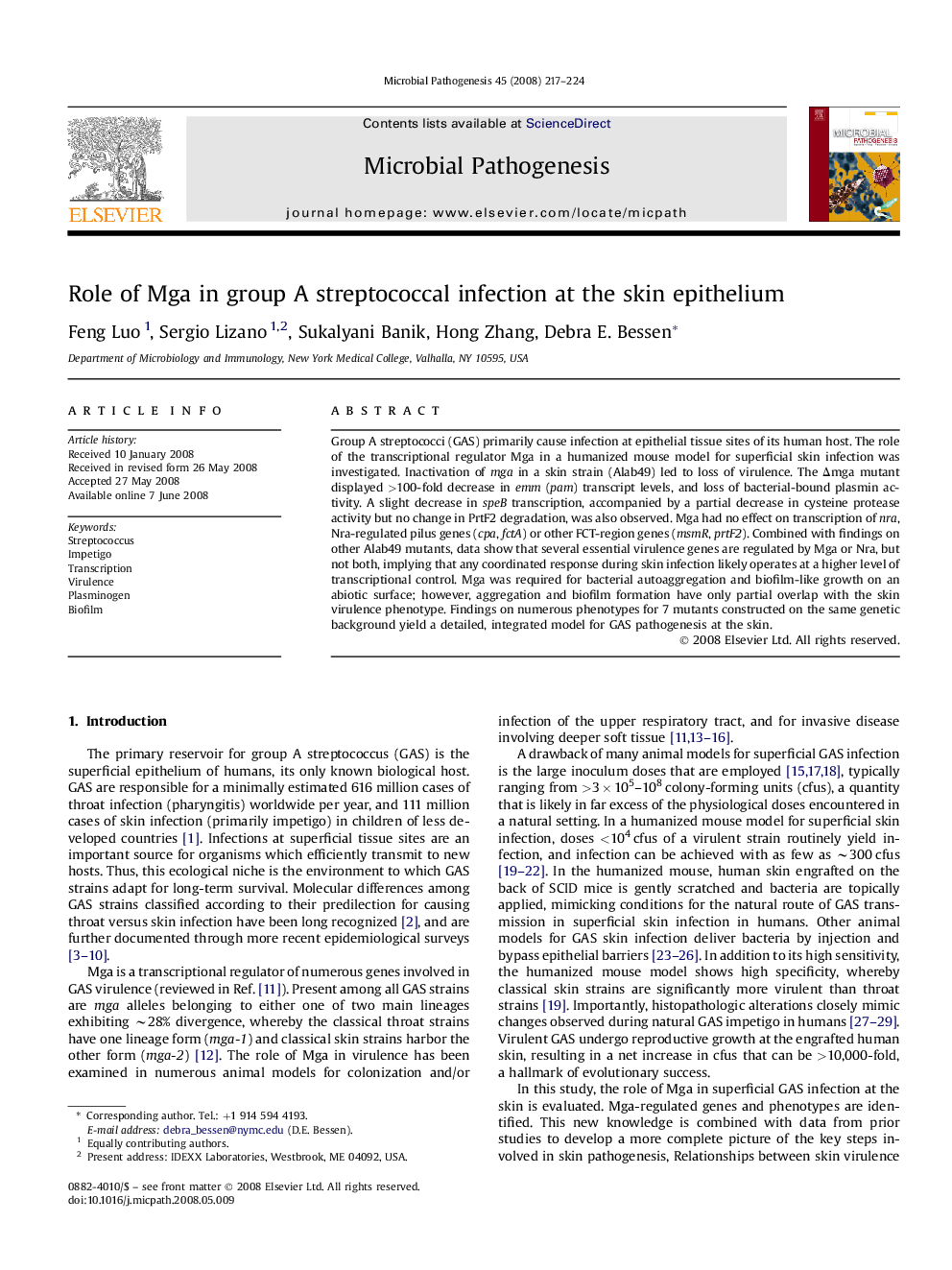| Article ID | Journal | Published Year | Pages | File Type |
|---|---|---|---|---|
| 3417237 | Microbial Pathogenesis | 2008 | 8 Pages |
Group A streptococci (GAS) primarily cause infection at epithelial tissue sites of its human host. The role of the transcriptional regulator Mga in a humanized mouse model for superficial skin infection was investigated. Inactivation of mga in a skin strain (Alab49) led to loss of virulence. The Δmga mutant displayed >100-fold decrease in emm (pam) transcript levels, and loss of bacterial-bound plasmin activity. A slight decrease in speB transcription, accompanied by a partial decrease in cysteine protease activity but no change in PrtF2 degradation, was also observed. Mga had no effect on transcription of nra, Nra-regulated pilus genes (cpa, fctA) or other FCT-region genes (msmR, prtF2). Combined with findings on other Alab49 mutants, data show that several essential virulence genes are regulated by Mga or Nra, but not both, implying that any coordinated response during skin infection likely operates at a higher level of transcriptional control. Mga was required for bacterial autoaggregation and biofilm-like growth on an abiotic surface; however, aggregation and biofilm formation have only partial overlap with the skin virulence phenotype. Findings on numerous phenotypes for 7 mutants constructed on the same genetic background yield a detailed, integrated model for GAS pathogenesis at the skin.
